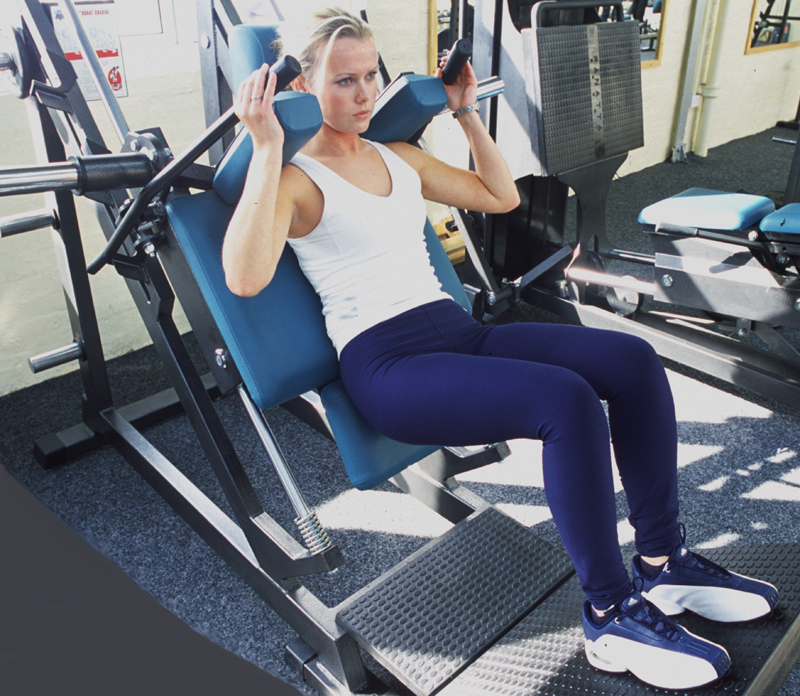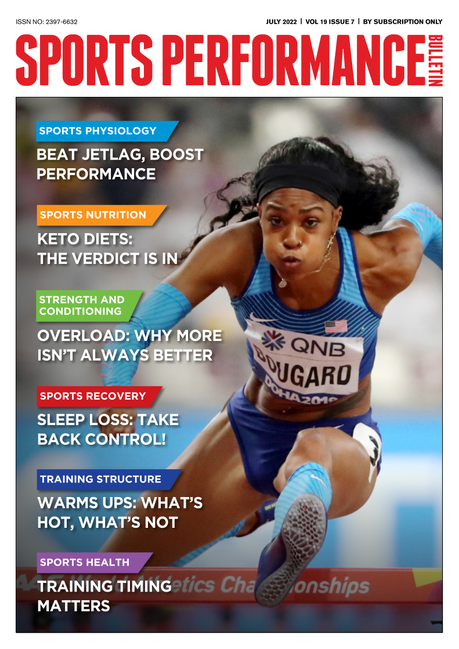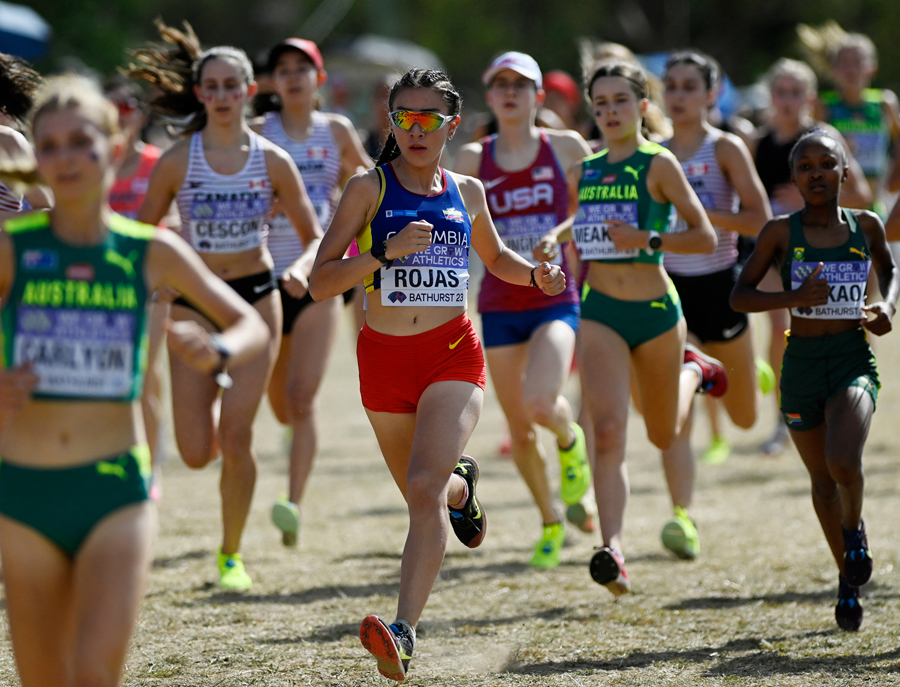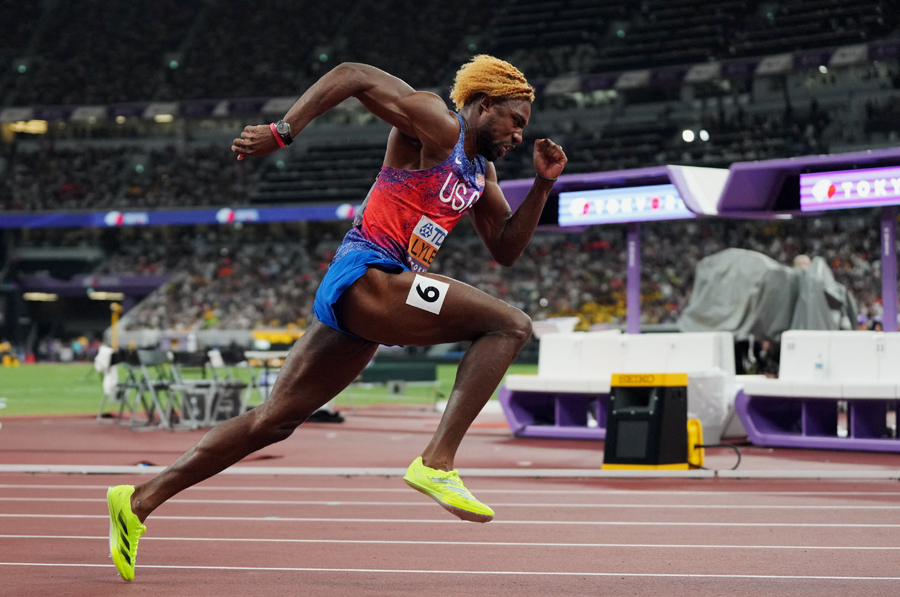You are viewing 1 of your 1 free articles. For unlimited access take a risk-free trial
Strength for endurance: weighty decisions
Can lifting heavy weights really improve endurance performance? SPB looks at definitive new research and makes recommendations for endurance athletes
As all endurance athletes know, maximizing performance requires the optimization of a lot of physical capabilities. While training ever harder and longer might seem like the obvious solution, this strategy will inevitably lead to injury and burnout. What’s need is a more nuanced and intelligent approach, with a carefully crafted training program that employs all the necessary tools to raise performance, without the downsides of a sledgehammer approach. In this article, we will look at new research on whether adding heavy strength training (ie using a load that 80% or more of the maximum load you can lift just once) to your routine can make a real difference to endurance performance.
Elements of performance
In years gone by, the main goal of endurance training was to increase maximum aerobic capacity – more technically known as ‘VO2max’ (measured in millilitres of oxygen per kilo of bodyweight per minute – ml/kg/min). The reason is simple; over long-distance events, nearly all the energy for muscle movement is derived by burning carbohydrate (glycogen) and fat in the presence of oxygen. But while the human body can store plenty of fat, and quite a bit of carbohydrate, oxygen storage capacity is virtually nil. That means the amount of oxygen available to exercising muscles is determined by the body’s ability to absorb, transport and deliver oxygen to those muscles. Related to VO2max is something called pVO2max, which is the actual power output (in watts) you produce when you’re at your VO2max.
However, over the past thirty years or so, evidence has accumulated indicating that a much better measure (than VO2max) of an individual’s aptitude for success in endurance events is something called ‘maximal lactate steady state’ –or MLSS for short(1,2). This measure is the maximum workload that the body can sustain without the accumulation of (fatiguing) lactate in the bloodstream(3). In simple terms, this is like your maximum cruising speed without blowing up and having to slow down! Although it might seem a trivial distinction, the use of MLSS is more relevant in real-world conditions because endurance athletes typically have to sustain maximal power/speed for long periods of time. This means that the maximal oxygen uptake becomes less relevant than the maximum sustainable power output.
Other factors
Other factors that need to be taken into consideration include ‘muscular efficiency’. Muscles that work very efficiently are able to generate more propulsive force while requiring less energy (and therefore less oxygen). This internal type of efficiency is referred to as ‘muscle economy’. Economy refers to how efficient the muscles are (in terms of oxygen usage) at producing force during sub-maximal exercise (ie not flat out). The better the economy of your muscles during exercise, the less oxygen you need to use to propel yourself along at a given speed. Less oxygen consumption and less energy expenditure inevitably means less muscle glycogen (the best fuel for exercise) depletion and less fatigue, which enables athletes to go further and faster than less efficient athletes.
In sports where sprints are sometimes required, ‘anaerobic capacity and power’ are also relevant to performance. This aspect can be considered as the body’s backup battery for short, explosive efforts when aerobic power alone (from oxygen) isn’t enough. Anaerobic capacity is how much of this quick energy you have in the tank (for efforts lasting a minute or two), while your anaerobic power is how fast you can unleash it (like sprinting to the finish line). In cycling for example, good anaerobic capacity and power is needed during attacks, sprints, or bridging gaps in a peloton.
Finally, recent research has determined that something called ‘durability’ is also essential for good endurance performance. As Andrew Sheaff explains elsewhere in this issue, an athlete’s durability is a measure of their ability to maintain robust physiological function (VO2max, MLSS, and economy) throughout a race or competition. In short, athletes with high levels of durability are less prone to deterioration in the elements of performance described above during a prolonged bout of exercise.
Strength training for endurance
Research shows that strength training in general can improve endurance performance, particularly when it comes to improving muscle economy(4-7). But what about heavy strength training for endurance performance – ie strength sessions using squats, deadlifts, or leg presses with weights so heavy you can only do a few reps? For athletes such as runners and cyclists, strength training using large loads might seem counterintuitive because of the concern that heavy weights might make them bulky and slow (spoiler alert – it doesn’t).
However, heavy weight sessions focus on brief high-intensity work – not high volumes of strength work, which tends to be very tiring. If heavy weights can improve performance without messing up endurance base training, it could be a useful win-win tool. To date however, there remains some controversy as to how useful heavy strength training really is for endurance athletes. That’s because the studies have used a wide variety of endurance sports, training exercises and training loads, which adds a lot of uncertainty. However, a new study on this topic has just been published, and provides a lot more clarity for athletes and coaches alike.
New research
Published in the prestigious European Journal of Applied Physiology, this systematic review and meta-analysis study (a study design that provides a robust level of evidence) rounded up all the previous high-quality studies on heavy strength training to establish how it affects those key physiological factors that drive endurance performance(8). In particular, they sought to establish whether heavy lifting for three weeks or more made cyclists perform better, and if so, how. To ascertain this, the researchers focused on real-world outcomes like time to exhaustion (how long you can ride at a set intensity before being forced to drop the pace) and time-trial performance. These parameters were chosen to reflect what matters to cyclists in training or races.
What they did
The first step was to scour the all the major scientific databases such as PubMed, Web of Science, and Scopus for randomized controlled studies on this topic published up until the time of the researchers’ investigation (February 2025). They used a strict checklist called ‘PICOS’ to select the studies in the databases that met their strict criteria:
· Population: endurance cyclists 18 years or older, any gender, any skill level - from weekend warriors to pros.
· Intervention: heavy strength training for at least three weeks, where ‘heavy’ meant loadings at 80% or more of one-rep max (1RM) using exercises such as squats, lunges, or calf raises etc.
· Contained a control group that just did their usual cycling endurance training (like long rides or intervals) without any heavy weights.
· Outcomes measuring before/after changes in the key elements discussed above (ie VO2max, pVO2max, MMSS, efficiency, anaerobic capacity and power) and actual performance , either in time to exhaustion or time trial performance.
In addition, the researchers checked for bias (flaws in study design) using a tool called PEDro and rated the overall evidence strength with another tool called GRADE (which looks at things like study quality and consistency). Then, they crunched the numbers with meta-analysis, which is a statistical method that pools data and combines results from multiple studies to generate more reliable and robust data. Of particular interest was whether factors like age, sex, or how long/often training took place was relevant to whether the strength training was effective. As is generally the case in scientific studies, significance was set at ‘p ≤ 0.05’, meaning that if the chance of the result being a statistical blip was 5% or less, it was counted as real.
What they found
In total, 17 studies involving 262 cyclists (202 men and 60 women), with an average baseline VO2max of about 61ml/kg/min (aerobically fit, equivalent to strong amateur or semi-pro level). Training durations in these 17 studies lasted from five weeks up to 25 weeks, with sessions per week ranging from one to three. The actual training sessions varied but typically involved 3-5 sets of 4-10 reps per exercise, focusing on the lower body using squats, leg presses, lunges, calf raises etc. In terms of performance changes, the results were as follows:
· Compared to cyclists who did no heavy weight training, cycling efficiency (economy) improved with an effect size of 0.353, which is a small but meaningful boost (see figure 1). In plain English, they got better at turning energy burned into pedal strokes and forward motion (a good thing as explained above!).
· Anaerobic power increased with an effect size 0.560, which translates into a moderate improvement. This kind of improvement would allow a cyclist to sprint harder or accelerate quicker out of corners, thanks to better explosive strength.
· Overall cycling performance went up. Time to exhaustion and time trial performance improved with an effect size of 0.46 (see figure 2), which would translate to a 2 - 5% improvement - huge in competitive cycling!
· There were no significant changes in VO2max, pVO2max, MMSS, or anaerobic capacity, suggesting that heavy weight training cannot supercharge an endurance athlete’s aerobic engine or threshold, but instead enhances his/her ability to use what they already have.
Interestingly, nothing about the cyclists’ characteristics themselves (like sex, weight, height, skill level, or prior strength experience) or the strength program design (number of weeks in length, sessions per week, exact exercises) seemed to influence the results. This suggests that heavy strength training benefits can apply broadly—whether you’re a newbie or a veteran, male or female.
Figure 1: Heavy strength training and cycling efficiency (economy)
In the ‘forest plot’, the black squares indicate the mean effect size observed for each study, and the black square size reflects the study ‘weight’ or importance. The diamond represents the effect size of the combined study results. A negative effect size represents a beneficial effect – ie less oxygen required to maintain a given pace, equating to greater efficiency. Since the diamond lies completely to the left (negative) of the zero line, this shows heavy strength training reduces oxygen demand and improves efficiency.
Figure 2: Heavy strength training and cycling performance
In this forest plot, anything to right of the zero line equates to better cycling performance (longer time to exhaustion and faster time trials). We can see clearly that nearly all of the squares and the diamond representing all the data combined suggest a strong performance benefit when adding heavy strength work to a cycling program.
Practical implications
These results strongly suggest that in cyclists, a heavy strength training program really does boost endurance performance, regardless of the type of program carried out, its duration (so long as it’s five weeks or more), the exercise composition, or the cyclist’s own characteristics. Moreover, given that studies have also demonstrated the performance benefits of heavy strength training in other athletes such as runners(9) and rowers(10), there’s good reason to believe that it will benefit endurance performance in a wide range of endurance sports.
A little caution is required as while this meta analysis provides very robust evidence, the studies included in it were quite varied in their methodology and sometimes small in size. Therefore we cannot say it provides absolute rock-solid proof for every athlete. On balance however, we can be very confident that the benefits of heavy strength training for endurance will be apparent for most athletes. To reiterate, while heavy strength exercises such as squats won’t develop your endurance engine, they will improve your ‘transmission’ of the aerobic power you already have, leading to better race times.
If you’re an endurance athlete trying to raise performance and not already undertaking some heavy strength training, you could worse than adding some to your weekly training routine. If you’re a novice to strength training, it’s a good idea to get some initial guidance from a qualified strength coach to help you get underway, and make sure you don’t pick up an injury. Start with just one session per week and work your way in building up your loading until you reach 80% of 1-RM. Cyclists, runners and rowers, should focus on the lower body legs with compound exercises such as squats, lunges and deadlifts. Be sure however, to schedule in a rest or easy session the day after your strength session. Aim for an initial 8-12 week program and compare your before/after times or power outputs.
References
1. Med Sci Sports Exerc. 2001;33(12):2089–2097
2. Med Sci Sports Exerc. 2005;37(10):1734–1740
3. Eur J Appl Physiol. 2003;89(1):95–99
4. J Sports Sci. 2018;36:613–29
5. J Strength Cond Res. 2016;30:2361–8
6. Sports Med. 2017;47:545–54
7. Int J Sports Physiol Perform. 2018;13:57–64
8. Eur J Appl Physiol. 2025 Jul 9. doi: 10.1007/s00421-025-05883-2. Online ahead of print
9. Med Sci Sports Exerc. 2025 Jul 1;57(7):1546-1558
10. Front Physiol. 2020 Jul 21:11:888
Newsletter Sign Up
Testimonials
Dr. Alexandra Fandetti-Robin, Back & Body Chiropractic
Elspeth Cowell MSCh DpodM SRCh HCPC reg
William Hunter, Nuffield Health
Newsletter Sign Up
Coaches Testimonials
Dr. Alexandra Fandetti-Robin, Back & Body Chiropractic
Elspeth Cowell MSCh DpodM SRCh HCPC reg
William Hunter, Nuffield Health
Keep up with latest sports science research and apply it to maximize performance
Today you have the chance to join a group of athletes, and sports coaches/trainers who all have something special in common...
They use the latest research to improve performance for themselves and their clients - both athletes and sports teams - with help from global specialists in the fields of sports science, sports medicine and sports psychology.
They do this by reading Sports Performance Bulletin, an easy-to-digest but serious-minded journal dedicated to high performance sports. SPB offers a wealth of information and insight into the latest research, in an easily-accessible and understood format, along with a wealth of practical recommendations.
*includes 3 coaching manuals
Get Inspired
All the latest techniques and approaches
Sports Performance Bulletin helps dedicated endurance athletes improve their performance. Sense-checking the latest sports science research, and sourcing evidence and case studies to support findings, Sports Performance Bulletin turns proven insights into easily digestible practical advice. Supporting athletes, coaches and professionals who wish to ensure their guidance and programmes are kept right up to date and based on credible science.













